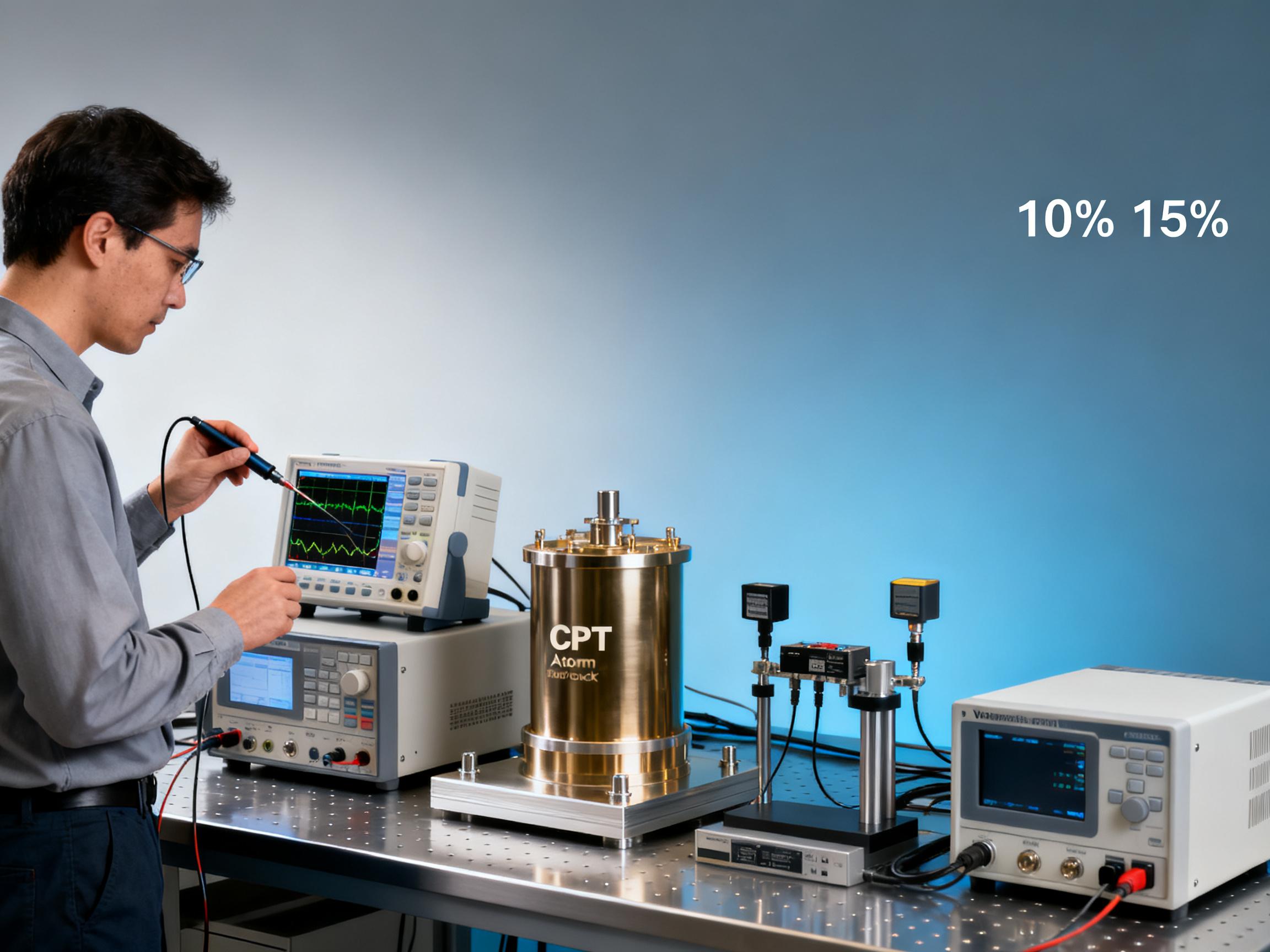RELATED
![How CPT Atomic Clocks Reduce OPEX in 5G Base Stations [Real Data] How CPT Atomic Clocks Reduce OPEX in 5G Base Stations [Real Data]](https://usimg.bjyyb.net/grey.png?x-oss-process=image/resize,m_fixed,w_800,h_600,limit_0) How CPT Atomic Clocks Reduce OPEX in 5G Base Stations [Real Data]2025-12-11
How CPT Atomic Clocks Reduce OPEX in 5G Base Stations [Real Data]2025-12-11 2024 CPT Atomic Clock vs Rubidium: Which Offers Better Stability for Telecom Networks?2025-12-08
2024 CPT Atomic Clock vs Rubidium: Which Offers Better Stability for Telecom Networks?2025-12-08 Live Demo Results: CPT Atomic Clock Performance Under Harsh Environmental Tests (Data Inside)2025-12-05
Live Demo Results: CPT Atomic Clock Performance Under Harsh Environmental Tests (Data Inside)2025-12-05 Budgeting for Precision: Total Cost of Ownership for a Rubidium Atomic Clock Over 5 Years2025-12-03
Budgeting for Precision: Total Cost of Ownership for a Rubidium Atomic Clock Over 5 Years2025-12-03
MESSAGE
DC regulators can be divided into linear DC regulators and switching DC regulators according to their working principles and structures. They each have different advantages and disadvantages:
1. Linear DC regulator:
Advantages:
High Output Voltage Accuracy:
Linear DC regulators compensate for changes in input voltage by adjusting the voltage drop of components (such as power transistors or field effect transistors), and can achieve very precise voltage regulation. Its output voltage can be stabilized within a very small error range, for example, it can reach an accuracy of ±0.1% or even higher, and is suitable for electronic equipment with extremely high voltage accuracy requirements, such as high-precision measuring instruments, laboratory power supplies, etc.
Small Output Ripple:
Since the adjustment element of the linear regulator works in the linear region, the output voltage is relatively smooth, there is almost no high-frequency switching noise, and the output ripple voltage is usually at the millivolt level or even lower. This makes it particularly suitable for powering circuits that are sensitive to ripples, such as analog circuits, audio circuits, etc., and can effectively avoid ripple interference with signals, ensuring the normal operation of the circuit and signal quality.
Simple Circuit Design:
The circuit structure of the linear DC regulator is relatively simple, mainly composed of adjustment elements, reference voltage source, comparison amplifier and feedback circuit. It does not require complex control circuits and high-frequency components, and is relatively easy to design and debug. It has certain advantages for some application scenarios with high requirements for cost and development cycle.
Low electromagnetic interference (EMI):
Because there is no high-frequency switching action, the linear regulator will not generate high-frequency electromagnetic interference and has little impact on surrounding electronic equipment. In some environments with high requirements for electromagnetic compatibility, such as medical equipment, aerospace equipment, etc., linear regulators are a better choice.
Disadvantages:
Low Efficiency:
The adjustment element of the linear regulator works in the linear region, which consumes a lot of power and leads to low efficiency. Its efficiency is usually between 30% and 60%, especially when the difference between the input voltage and the output voltage is large, the efficiency will be lower. This will not only cause energy waste, but also cause the regulator to generate more heat, requiring additional heat dissipation measures, increasing the cost and volume of the system.
Limited Output Current:
Due to the large power loss of the adjustment element, the output current of the linear regulator is generally limited. For application scenarios that require a large output current, it may be necessary to use multiple linear regulators in parallel or select other types of regulators, which will increase the complexity and cost of the circuit.
Limited Voltage Adjustment Range:
The input voltage of the linear regulator must be higher than the output voltage by a certain value to ensure the normal operation of the adjustment element. This makes its voltage adjustment range relatively narrow, and it may not meet the requirements for some application scenarios with large input voltage changes.
2. Switching DC regulator:
Advantages:
High Efficiency:
The switching DC regulator adjusts the output voltage by controlling the on and off time of the switch tube. The switch tube works in the switching state with less loss, so the efficiency is high, usually reaching 70% - 90% or even higher. This makes it have great advantages in applications that require high-efficiency power conversion, such as portable electronic devices, electric vehicles, etc., which can extend the battery life and reduce energy consumption.
Large Output Current:
The switching regulator can provide a large output current to meet the needs of high-power loads. By rationally designing the circuit and selecting the appropriate switch tube, an output current of tens of amperes or even higher can be achieved, which is suitable for industrial control, communication power supply and other fields.
Wide Voltage Adjustment Range:
The switching regulator can realize various voltage conversion functions such as boost, buck, buck-boost, etc. The input voltage can be higher or lower than the output voltage, and the voltage adjustment range is wide. This enables it to adapt to different input voltage conditions and has greater versatility and flexibility.
Small Size And Light Weight:
Due to the high efficiency of the switching regulator, the heat generated is relatively small, and no large heat dissipation device is required. At the same time, miniaturized inductors, capacitors and other components can be used in its circuit, so it is small in size, light in weight, easy to integrate and install, and suitable for use in devices with limited space, such as mobile phones, tablets and other portable devices.
Disadvantages:
Large Output Ripple:
The output voltage of the switching regulator is obtained by filtering the high-frequency pulse voltage. Although there is a filtering circuit, there will still be a certain high-frequency ripple. The output ripple voltage is generally tens of millivolts or even higher. For some circuits that are sensitive to ripple, additional filtering measures need to be taken to reduce the impact of ripple, which will increase the complexity and cost of the circuit.
Large electromagnetic interference (EMI):
Due to the high-frequency switching action of the switch tube, high-frequency electromagnetic interference will be generated, which may affect surrounding electronic equipment. In order to meet the requirements of electromagnetic compatibility, electromagnetic shielding and filtering measures need to be added to the circuit, which will also increase the cost and volume of the circuit.
Complex Circuit Design:
The control circuit of the switching regulator is relatively complex, and the on and off time of the switch tube needs to be precisely controlled to achieve a stable voltage output. At the same time, it is also necessary to consider the driving, protection and feedback control of the switch tube. The design and debugging are difficult and require a high level of technical skills from engineers.
CONTACT US
Please use the form below to get in touch.
If you need a reply we will get in touch as soon as possible.

![How CPT Atomic Clocks Reduce OPEX in 5G Base Stations [Real Data] How CPT Atomic Clocks Reduce OPEX in 5G Base Stations [Real Data]](https://usimg.bjyyb.net/sites/91500/91958/1765179857856560163985903616.jpeg)



